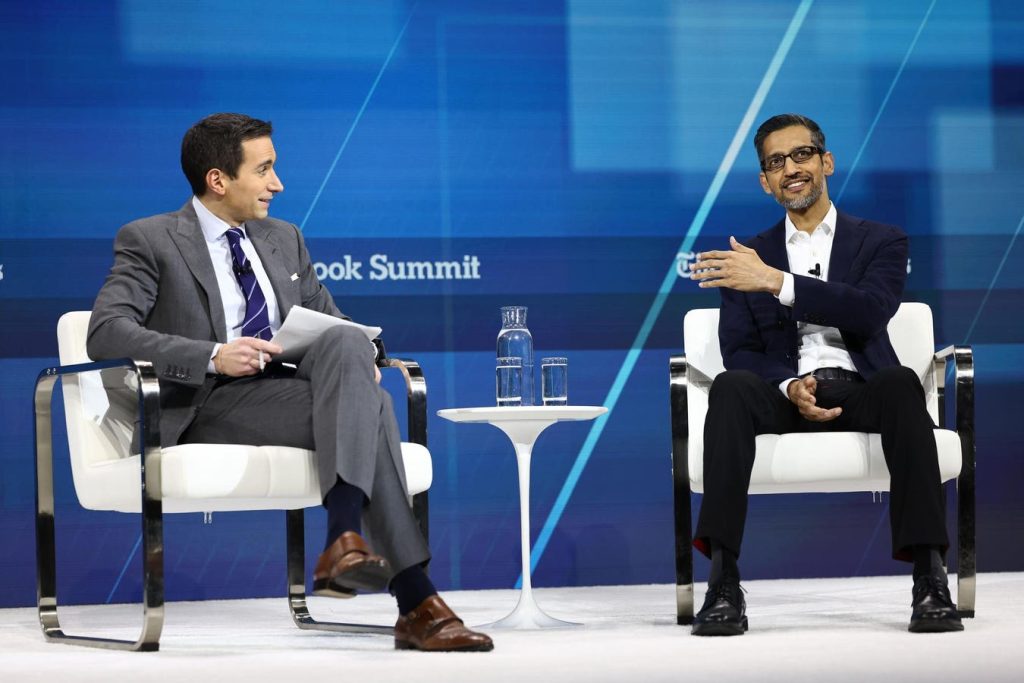The future trajectory of generative AI remains a contentious topic. While some industry leaders, such as OpenAI’s CEO Sam Altman, predict rapid acceleration and groundbreaking advancements in the near future, others, including Google CEO Sundar Pichai, anticipate a period of slower progress, emphasizing the need for “deeper breakthroughs” to achieve significant advancements. This divergence in opinion underscores the inherent uncertainty surrounding the technology’s long-term impact. The question of whether generative AI will ultimately live up to its hype or fall short, like virtual reality, remains unanswered. A historical comparison to previous technological waves, such as the World Wide Web, blockchain, and virtual reality, reveals a mixed bag of outcomes, with only the Web truly fulfilling its transformative potential.
Determining the ultimate success of generative AI hinges on several key factors, which can be framed as a set of crucial questions. These questions, applicable to organizations across various sectors, address market needs, profit potential, competitive threats, value creation, and required skill sets. First, does the technology address a significant unmet societal need? Second, do the target markets offer substantial profit potential? Third, can the organization effectively manage the potential threats posed by the technology? Fourth, can generative AI deliver a substantial leap in value for customers compared to existing solutions? Finally, does the company possess, or can it acquire, the necessary skills to outperform competitors in providing this superior value? The answers to these questions will vary considerably depending on whether a company is a supplier of generative AI tools and infrastructure or a user leveraging the technology for operational improvements and new product development.
On the supply side, Nvidia stands out as a clear leader, having successfully addressed these questions and capturing a dominant market share in providing essential hardware for AI development. Other companies, such as Vertiv, ServiceNow, and Salesforce, are demonstrating promising early progress. However, many suppliers are still grappling with the challenges of this rapidly evolving landscape. For companies utilizing generative AI, tangible value generation remains elusive. While some employees are using AI chatbots for basic tasks like drafting emails or marketing copy, and a handful of companies are achieving limited productivity gains in functions like coding and customer service, widespread, transformative impact is yet to be realized.
The contrasting predictions for generative AI’s future from Google and OpenAI reflect their differing positions and strategies. Google, despite having substantial resources, including vast data sets from YouTube and Gmail, and a leading cloud platform, has experienced a loss of key AI talent. This exodus raises concerns about Google’s ability to retain the expertise needed to drive significant advancements in generative AI. OpenAI, on the other hand, faces challenges related to its dependence on Microsoft for funding and cloud services, coupled with projected significant financial losses in the coming years. However, OpenAI boasts a large user base and a substantial private market valuation, reflecting market optimism about its potential.
Pichai’s cautious outlook for 2025 stems in part from the reportedly underwhelming performance of OpenAI’s forthcoming LLM, Orion. He anticipates a slower pace of advancement and emphasizes the need for more fundamental breakthroughs to unlock greater value for corporate users. Altman, conversely, maintains a bullish stance, dismissing the notion of limitations and predicting the achievement of Artificial General Intelligence (AGI) by 2025. This audacious claim aligns with internal sentiments within OpenAI, further fueling expectations of rapid progress. The contrasting viewpoints highlight the uncertainty surrounding the technology’s trajectory and the potential for unforeseen breakthroughs or unforeseen roadblocks.
The hardware and application suppliers within the generative AI ecosystem are currently experiencing significant financial success, exemplified by Nvidia’s remarkable stock performance. Nvidia’s dominance in the GPU market is driven by the immense demand from cloud service providers for powerful chips essential for training and operating large language models. The company’s success is attributable to its ability to provide a high return on investment for customers despite the substantial upfront costs of its chips, coupled with its comprehensive expertise in chip design and software development. This has positioned Nvidia as the leading provider of the “picks and shovels” in the generative AI gold rush.
However, the long-term sustainability of this demand hinges on the ability of generative AI “miners” – the companies using the technology to improve their operations – to demonstrably increase their value. The current reality is that most companies have yet to realize significant value from generative AI. A killer application, analogous to the spreadsheet for personal computers or the iTunes store for the iPod, has yet to emerge. While some companies, like Klarna, are using generative AI to automate customer service and reduce headcount, this cost-cutting approach alone is unlikely to drive sustainable growth and increased valuation. The true test of generative AI’s impact will lie in its ability to fuel the creation of new growth curves and revenue streams.
Klarna’s utilization of generative AI in customer service, resulting in a significant reduction in staff, presents an interesting case study. While the company has achieved cost savings, the crucial question is whether these efficiencies can be translated into faster growth and improved profitability. Without a clear strategy for leveraging generative AI to outpace competitors and exceed investor expectations, the long-term benefits of these cost reductions remain uncertain. Ultimately, the enduring legacy of generative AI will depend on whether it proves to be a transformative innovation akin to the World Wide Web or a transient, albeit expensive, fad like virtual reality. The future hinges on whether companies can harness its potential for genuine value creation and sustainable growth, rather than merely achieving short-term cost reductions.

